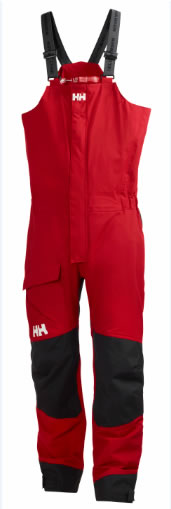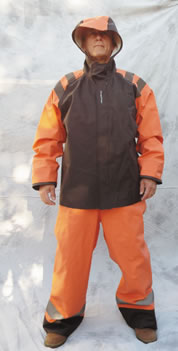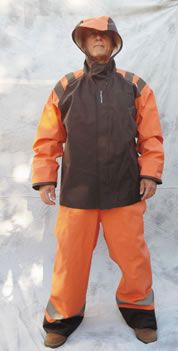


At the very least, foul-weather gear must be warm, dry, and comfortable. It also should be easy to adjust and fasten, which means zippers, Velcro, buckles, and pull cords must function without a hitch-and do so repeatedly, thousands of times. But what makes the ideal foulie set? Here are our criteria for top-notch gear.
Foulie jackets and bibs/trousers should be made of durable material resistant to abrasion and marine elements, especially sun, salt water, and the unforgiving hardware and rough surfaces found aboard most sailboats.
The garments should be windproof, water resistant, and breathable, all of which require high-quality fabric, stitching, and an easily adjustable cinch cord at the waist. Sleeves must be secured at the wrist with both Velcro and an internal seal to keep water from traveling up the arm when immersed or confronted by waves, spray, or horizontal rain.
A storm flap with Velcro should cover the jacket zipper to make it more wind- and waterproof. Velcro should be used to secure arm, ankle, and neck holes, and it must endure repeated use without losing its fastening ability.
The jacket must have a hood, which should be brimmed and somewhat rigid at the peak to steer water away from the face. Some manufacturers have added a sewn-in, bendable wire along the hood brim and a mesh lining for comfort and breathability. At least one manufacturer offers side windows in the hood to enhance peripheral vision.
A quality kit also must incorporate safety features such as reflective patches on the jackets hood, shoulders, and other areas. Properly placed reflective strips, patches, and piping could prove the difference between tragedy and survival in a man-overboard situation. After dark, its a lot easier to spot a reflector in the water than a navy-colored hood bobbing in the waves. Hence, many manufacturers are adopting the fluorescent green, high-visibility hood as the industry standard.
Marine apparel must be able to take a beating, so testers prefer foul-weather gear reinforced with Cordura or other rugged material at the knees, elbows, and seat. These patches add abrasion resistance and improve durability.
Jacket features should include a variety of pockets-some for storing small items, some that are lined for hand-warming, and at least one that is well secured and mostly dry. Jackets and bibs designed with small, interior security pockets that are protected by a flap and Velcro strip, give the user a safe place to store keys, mini-flashlight or similar-sized items.
Zippers should be two-directional, made to YKK standards, large enough to operate with cold or gloved hands, and preferably, fitted with a pull tab.
For bonus features, we like to see zippered vents that allow heated air and moisture to escape for added breathability. Testers also prefer jackets with gear loops sewn near the chest that provide a place to attach small items like knives, whistles, or even a handheld GPS. Larger loops on the inside of the jacket near the neck or on the outside below the collar make it possible to hang the jacket in a closet or wet locker.
Even after succeeding at all of these exacting standards, foul-weather gear must be relatively lightweight, comfortable, and somewhat stylish.




































